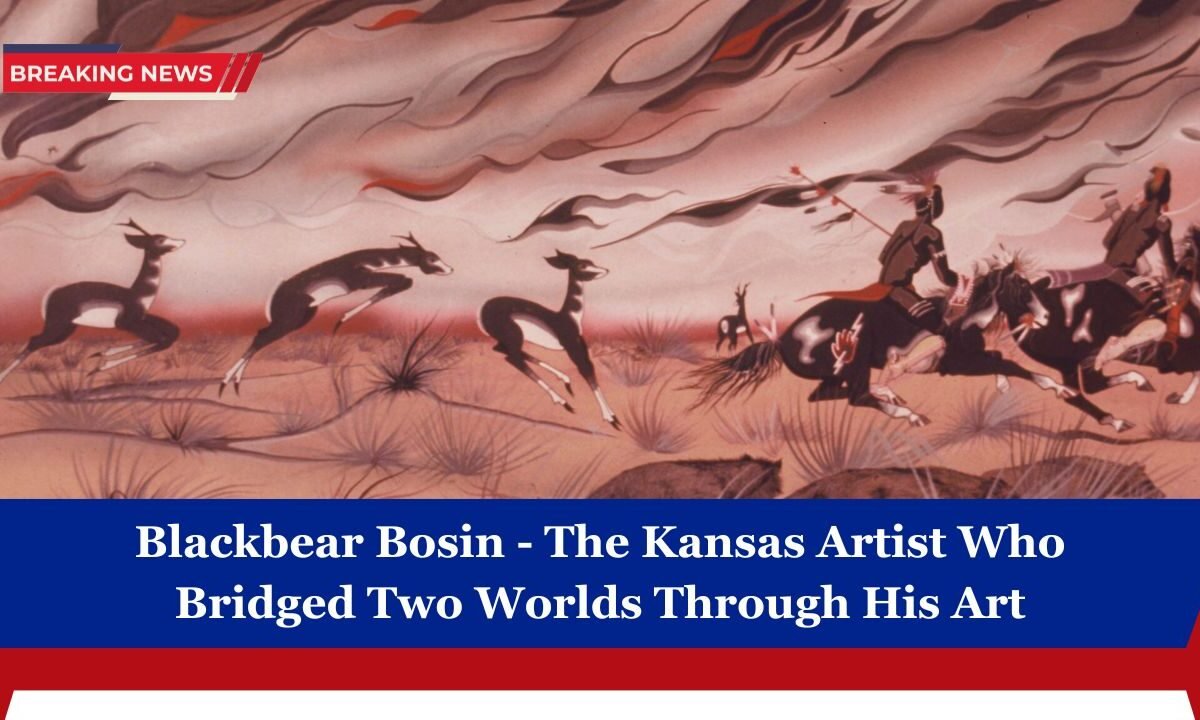Few artists have managed to capture the soul of Kansas and its Indigenous heritage as profoundly as Blackbear Bosin.
Known for his monumental creation, “The Keeper of the Plains,” Bosin was more than a painter and sculptor—he was a visionary who connected cultures, histories, and identities through art.
Early Life and Heritage
Born on June 5, 1921, in a tipi near Anadarko, Oklahoma, Bosin was of Kiowa and Comanche descent. His Kiowa name, Tsate Kongia (Blackbear), reflected his deep connection to his tribal roots.
Raised by his mother, Ada, a bead worker, he was encouraged early on to express his creativity. Though he had no formal art training, Bosin’s natural talent and cultural awareness would later shape his remarkable career.
At just 20, he moved to Wichita, Kansas, and found employment at Beech Aircraft before serving in the U.S. Marine Corps during World War II.
While stationed in Hawaii, he rekindled his passion for painting, and his first solo exhibition was held there in 1945.
A Style That United Two Worlds
Bosin’s art was a unique fusion of Kiowa flat-style painting and European techniques such as realism and surrealism.
He believed art could serve as a bridge between Native American spirituality and modern America. His paintings often depicted Native legends, ceremonies, and life on the plains, filled with energy and vivid colors.
His 1953 masterpiece, “Prairie Fire,” became nationally recognized when it was featured in National Geographic.
The painting’s dynamic composition—horses galloping across flaming fields under a searing sky—embodied his philosophy of portraying Native life not as tragedy, but as enduring spirit.
In 1959, Bosin opened the Great Plains Studio in Wichita, where he continued to produce paintings and murals.
His 1958 mural, “Advance of Civilization in Kansas,” still stands as a testament to his storytelling through art.
The Keeper of the Plains
Bosin’s most iconic work, “The Keeper of the Plains,” was completed in 1974. The 44-foot-tall Cor-Ten steel sculpture depicts a Native American man raising his hands to the sky, symbolizing unity between Earth and Spirit.
Positioned at the confluence of the Arkansas and Little Arkansas Rivers, it represents a sacred place where people once gathered for centuries.
The sculpture became a symbol of Wichita’s identity, celebrating both its Indigenous past and its modern aspirations. In 2007, it was elevated on a 30-foot pedestal and surrounded by the Ring of Fire, which is lit nightly to honor Bosin’s vision.
| Key Facts | Details |
|---|---|
| Full Name | Francis Blackbear Bosin |
| Birth | June 5, 1921 – Anadarko, Oklahoma |
| Heritage | Kiowa-Comanche |
| Iconic Work | The Keeper of the Plains (1974) |
| Style | Kiowa flat style blended with realism |
| Awards | Kansas Governor’s Artist, Distinguished Service Award |
| Died | August 9, 1980, age 59 |
Legacy and Influence
Bosin’s work continues to inspire new generations of artists. He portrayed Indigenous culture not as a relic but as a living, evolving force. His art invites reflection on heritage, identity, and coexistence — bridging past and present, land and spirit.
Blackbear Bosin remains a towering figure in Kansas and American art. Through his brush and chisel, he gave voice to traditions that might otherwise have been forgotten.
His legacy lives on through the Keeper of the Plains, standing tall where rivers meet—reminding us that true art transcends boundaries and unites worlds.




